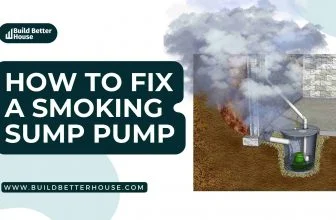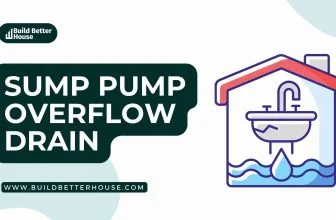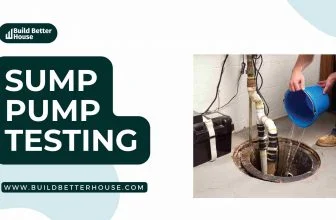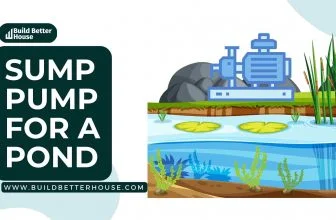How Do I Install Sump Pump Basin Holes? Follow These 7 Easy Steps
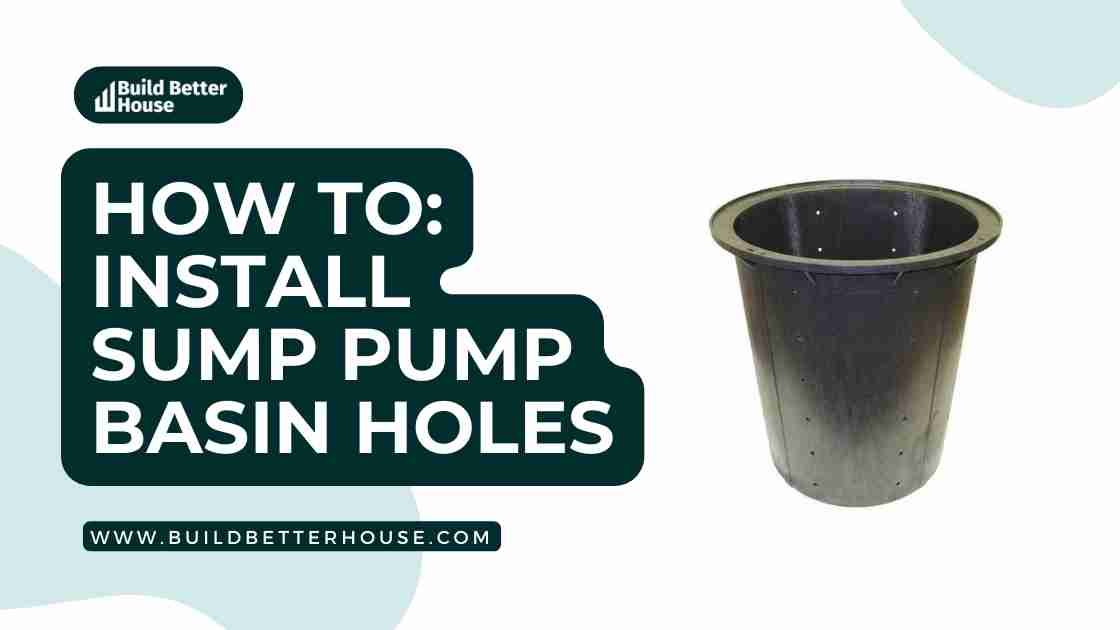
Sump pump basin holes are an essential component of any sump system, but many homeowners are unsure if they need to drill holes in their sump pump basin.
People using a sump pump for the first time might see the pump basin holes as nothing more than decorative dots; however, those who understand the value of these holes understand how critical they are in keeping a pump, crawlspace, basement, and house safe.
Sump pump basin holes are just as important as the pump itself. Without them, your basin may float in the pit, or your pump may take in gravel or debris through its inlet. As such, before putting a sump basin in a pit, drill the necessary holes.
This article will teach you everything you need to know about sump pump basin holes, including how large they should be, how many holes to drill, and whether they are necessary.
What is a Sump Pump Basin?
A sump pump basin is a container that aims to collect excess water in the sump pit. It is installed in the sump pit to protect the pump from dirt and dust by preventing gravel from getting into it. It allows moisture to enter quickly, allowing the pump to move water faster than usual.
A sump pit can typically find in a house’s basement or crawlspace. Every home with a sump pump requires a basin to collect water and drain the pump!
A basin is required to keep a machine running efficiently. Without it, your sump pump will not be able to move water properly and will not last long. As a result, it is essential to use a basin when installing a sump pump system.
How Does a Sump Pump Basin Work?
Water enters the sump pump basin via a hole in the basin’s bottom or sides. The sump pump activates when the water level in the basin reaches a certain level. This water will then pump out of the basin through a discharge pipe.
Sump pump basins come in various sizes, but most are 24 inches in diameter and 36 inches deep. The size of the basin you require will determine by the amount of water you expect it to collect and the frequency with which you want the sump pump to operate.
Are Sump Pump Basin Holes Necessary?
A sump pump basin must always have holes drilled; otherwise, the basin risks floating in the pit. This can result in pump damage and broken drain lines.
Most homeowners think a powerful pump will keep their basement dry, but there are other things you must do to set up the system correctly. Sump pump basin holes are one of them.
How Many Sump Pump Basin Holes Are Needed?
You must determine how many holes you need to drill in your sump pump basin; however, we advise drilling at least 4. Each hole should be spaced evenly around the outside of the basin.
If this still doesn’t provide enough room for water to flow, drill two more holes at a time. Drilling them equally across the basin is crucial to avoid cracking the plastic. Add more holes (or filler gravel) until the basin no longer floats in the pit.
Drilling basin holes is simple, but there are a few factors to consider before you begin. First, drill holes on a flat surface. Second, use a power drill or electric hammer to drill holes with steady pressure. Do not attempt to make the holes with a screwdriver, nails, or a hammer.
Make sure to drill holes on opposite sides of the basin, one at a time, from the inside out.
How to Drill Sump Pump Basin Holes?
Tools required for Sump Pump Basin Holes:
- Pencil or marker
- Masking tape
- Power drill
- ¼ or ½-inch drill bit
- Tape measure
Plastic tubs are usually used to make sump pump basins. Whenever water fills the basin, the sump pump float switch rises and turns on the pump until the water level drops enough to lower the float switch, which then turns off the pump.
Drill the sump pump basin holes to let water in and activate the float switch. Drill the holes near the top or down the sump pump basin, depending on whether the water enters the basin from the top or the sides.
Find the Source
The first step is to find out where the water comes from. Once you have decided, you will need to drill the sump pump basin holes according to the requirements.
Now you should identify the source of water. If the water flows from the top and drains into the pit, you’ll need to drill holes in the basin’s top. If it’s seeping in from the sides, you will need to drill a few more vertical holes.
Finally, you must drill from top to bottom if it comes from the ground.
Measure and Mark the Holes
It would be better if you could begin by removing the basin from the pit. If it’s wet, make sure to wait for it to dry.
Using the masking tape, mark at least 4 areas at the bottom of the basin where you’ll drill. The aim of drilling these holes is to keep the basin from floating when there is much water in the sump pit.
Make sure to measure from the original mark/masking tape’s center. The 4 holes should be four inches apart. Hence, after marking one point with masking tape, use a tape measure to point a spot four inches away from the original mark.
Once you’ve finished locating the points, mark them with a marker or pencil. You can stop if you think the number of holes is sufficient. It is preferable to drill four holes; if this is insufficient, add two more.
Once you locate the spots, use a marker or pencil to mark the points. It’s best if you drill at least 4 holes. If this is not enough, you should add two extra ones. Once you see the number of holes is enough, you should stop.
Grab your Drill Bit
Now, grab your power drill and insert a 1/2′′ or 1/4-inch drill bit. We recommend drilling 14-inch holes because you can increase the size of the holes if necessary. Drill the holes exactly 4-inches apart, horizontally and vertically, if possible. Use a tape measure.
Make sure you drill from the inside out. After drilling a hole on one side of the basin, you must drill another hole on the exact opposite side.
Drill the Holes
Once you’ve finished drilling the top and sides, you’ll need to work on the bottom. If you followed step 3 correctly, you should already have masking tape on the bottom of your basin. You’ll only need to use the power drill now to make holes. Drill the holes for the basin’s bottom.
Note: Hold the basin away from the hole when you drill. Pay more attention to avoid injury while drilling holes in the sump pump basin’s slick surface. Now your system is ready to use with the sump pump basin holes.
Don’t Want to Drill the Sump Pump Basin Holes?
Investing in a perforated sump pump basin is your best choice if you don’t want to deal with the inconvenience of drilling sump pump basin holes. There are numerous perforated basins on the market; however, the Jackel SF22A-DR is one of the best. Yes, it is slightly more expensive than the other models, but it is worth the investment.
The Jackel SF22A-DR is made of heavy-duty structural foam and is highly durable. Despite harsh conditions or standing water, the sump’s bottom is hex reinforced for long-term support. There is no difference whether the pit you’re using has standing water or gravelly soil, as the bottom won’t easily puncture, bend, or flex.
Moreover, the encapsulated inserts are made of non-corrosive glass-filled nylon, preventing gas or odor from forming in the basin. Sump pumps can sometimes emit a foul odor; however, with the SF22A-DR, this is not an issue.
The basin, on the other hand, has a 360-degree EZ Grab-Handle. The handle is made of the thickest and strongest rim, ensuring optimal performance for an extended period.
However, the basin’s durability may or may not be an issue for you. Since the sump is so thick, it can be challenging to fit it into small crawl spaces. Yet, if the measurements are accurate, you should be fine.
Forty-eight sump pump basin holes around the basin can be perforated as desired. You can perforate them if you want, but they will remain blocked if you don’t. In most cases, it is best to perforate only some of the holes and leave the rest as they are until they are needed.
Conclusion
Although sump pump basin holes may not appear significant on the surface, they are vital to the sump system. Your pumping needs can still meet without drilling holes. However, it won’t be long before your system fails.
If that happens, it will cost you far more than simply drilling some holes. So, before it’s too late, drill holes in the basin to keep your basement from flooding, your pump from taking in the garbage, and your house from smelling like a sewer. If you still don’t want to do it, you can always use a perforated basin. It makes the job easier.
Should a sump pump basin be perforated or not?
Yes, Sump basins should, indeed, be perforated. The perforated holes allow water into the basin while keeping debris and gravel out of the pump inlet. As a result, perforated basins are essential.
Do I need to drill sump pump basin holes?
Yes, If your sump basin isn’t already perforated, you’ll need to drill holes to keep it from floating.
How to keep a sump pump basin from floating?
The best way to keep a basin from floating is to drill holes. You can also try filling the basin with gravel to weigh it down.
How large and how many holes should there be in a Sump basin?
The diameter should be between ½” and 1/4 inches. This is the ideal size for sump pump basin holes. You can determine the number by the number of holes required to keep your pump operational and the basin from floating. Drill as few as 4 holes or as many as 48 holes.
FAQ
Should a sump pump basin be perforated or not?
Yes, Sump basins should, indeed, be perforated. The perforated holes allow water into the basin while keeping debris and gravel out of the pump inlet. As a result, perforated basins are essential.
Do I need to drill sump pump basin holes?
Yes, If your sump basin isn’t already perforated, you’ll need to drill holes to keep it from floating.
How to keep a sump pump basin from floating?
The best way to keep a basin from floating is to drill holes. You can also try filling the basin with gravel to weigh it down.
How large and how many holes should there be in a Sump basin?
The diameter should be between ½” and 1/4 inches. This is the ideal size for sump pump basin holes. You can determine the number by the number of holes required to keep your pump operational and the basin from floating. Drill as few as 4 holes or as many as 48 holes.



